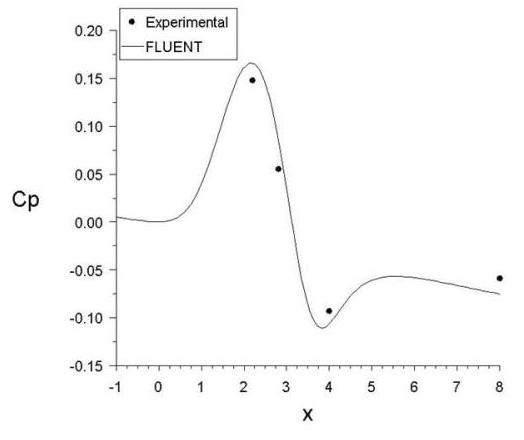VMFL016
VMFL016
Turbulent
Flow in a Transition Duct
Overview
| Reference | D.O. Davis, F.B. Gessner, “Experimental Investigation of Turbulent Flow Through a Circular-to-Rectangular Transition Duct”. AIAA Journal, Vol 30, pp. 367-375, 1992 | |
| Solver | Ansys Fluent | |
| Physics/Models | 3–D Turbulent flow with separation, Reynolds stress model | |
| Input Files |
| |
| Project Files | Link to Project Files Download Page |
Test Case
Turbulent flow through a circular-to-rectangular transition duct having the same inlet and outlet cross-sectional areas is modeled. The curvature of the duct walls induces a strong pressure-driven cross-flow that develops into a counter-rotating vortex pair near the short side walls of the duct. Due to symmetry of the flow field, only one fourth of the duct is modeled (as shown in Figure 39: Flow Domain). Station 5 is located 23 m downstream of the inlet.
| Material Properties | Geometry | Boundary Conditions |
|---|---|---|
|
Density: 1 kg/m3 Viscosity: 5.13X10–6 kg/m-s |
Inlet radius = 1 m Length of duct = 35 m |
Inlet velocity: 1 m/s |




